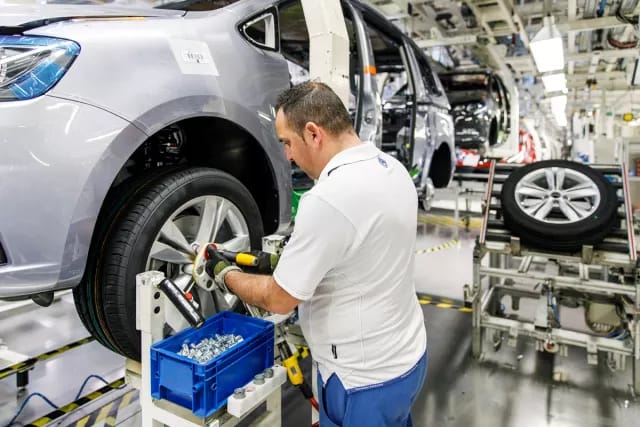
Desktop 3D printers are being found in the manufacturing industry at an increasing rate.
This is because fused filament fabrication (FFF) systems provide an affordable and accessible method for producing manufacturing tools, jigs and fixtures that speed up a company’s time to market while reducing the costs associated with having these parts made by a third-party service provider.
In the case of Volkswagen Autoeuropa, relying on Ultimaker 3D printers to fabricate these components in-house resulted in a 95 percent reduction in development times and a 91 percent drop in costs, saving the company what is estimated to be hundreds of thousands of dollars over the course of a year.
How is such a phenomenon possible?
Manufacturing Tools at Volkswagen Autoeuropa
Located in Palmela, Portugal, Volkswagen Autoeuropa is the company’s assembly plant associated with the production of the Volkswagen Sharan, Scirocco, Eos and the Seat Alhambra totaling over 100,000 vehicles per year.
Those unfamiliar with such a large-scale manufacturing operation may not be aware of the fact that, key to streamlining the production process are tools, jigs and fixtures. As Volkswagen Autoeuropa team members bolt components together along the assembly line, these manufacturing aids make it possible for employees to perform tasks quickly and precisely.
Historically, Volkswagen Autoeuropa has had to rely on third-party service providers to manufacture tools for every new assembly run. The entire process of outsourcing for manufacturing aids not only costs more for the manufacturer, but also delays the production process. In addition to the paperwork and time associated with sourcing suppliers, the company had to rely on a trial-and-error approach to using new tools, testing them and requesting revisions from the supplier.
In 2014, however, Volkswagen Autoeuropa began leveraging low-cost FFF 3D printers from Ultimaker to bring the toolmaking process inhouse.
3D Printing Manufacturing Aids In-House
Additive manufacturing (AM) has some well-documented advantages over traditional forms of production that make the technology especially suited to fabricating tools, jigs and fixtures for a manufacturing operation.
With the ability to translate a CAD file directly into a physical object, it’s possible to create custom items on demand. Without the need for expensive molds or CNC machining, one-off parts can be 3D printed for a specific task at a fraction of the cost. This is particularly important for manufacturing tools that may be used infrequently for a specific job.
Additionally, due to the additive nature of the technology, 3D printing enables part features that cannot be made with any other technology to be produced, including complex geometries with cavities, overhangs and undercuts.

Once Volkswagen Autoeuropa introduced FFF 3D printing to its manufacturing operation,these benefits soon came into play. As a means of reducing the company’s reliance on third-party suppliers, the production engineers, CAD designers and technicians first review the production and quality control processes, looking for areas where 3D printing might have some benefit for producing gauges, jigs and fixtures.
After the designs are created, they are sliced in Cura, Ultimaker’s free 3D printing management software, and sent to the printer, located alongside the assembly line, to be produced overnight. When the crew comes in the next morning, it can begin immediately taking advantage of the new tools.
Upon feedback regarding the tools’ utility, quality and ergonomics, shop floor operators can offer feedback, verification and review. This concept of “just-in-time inventory” makes it possible to more quickly reiterate the designs so that the shop floor can begin using new designs immediately upon fabrication.

“Now we have way more tools, with better fit and for far less money. Just by printing a handful of tools, we can get back the initial investment,” said Luis Pascoa, Pilot Plant manager at Volkswagen Autoeuropa. “The timings and costs to produce tools led us to a fast ROI, better product quality, and satisfaction throughout the entire process—from development stages to the final product. Our innovative 3D-printed products are being used in several areas and are considered best practices within the Volkswagen Group.”
“With Ultimaker, we have more autonomy, and this status allows us to be fast on product optimization and the creation of production support tools,” Luís Reis, Pilot Plant engineer at Volkswagen Autoeuropa, contributed.
Read more at ENGINEERING.com

